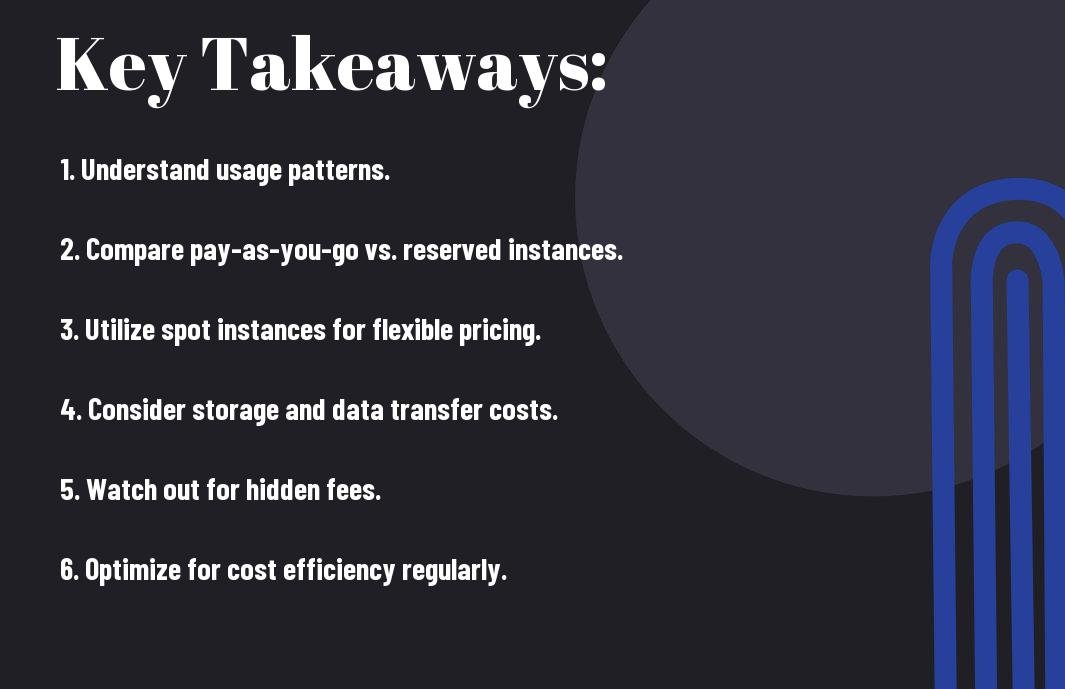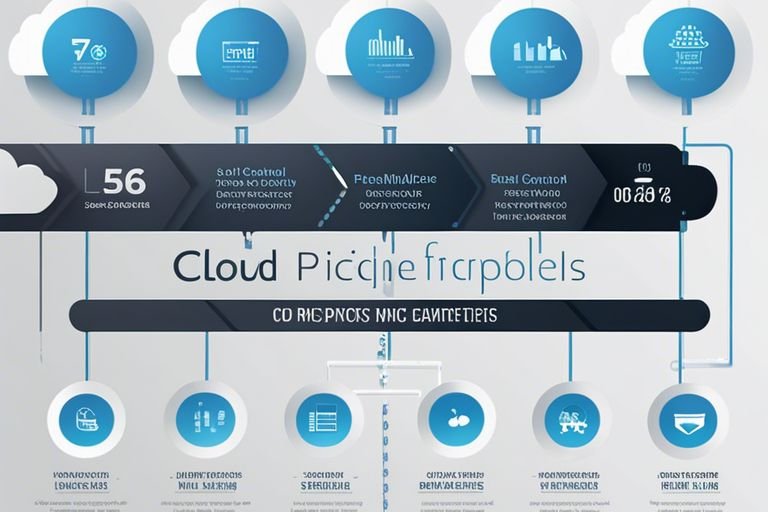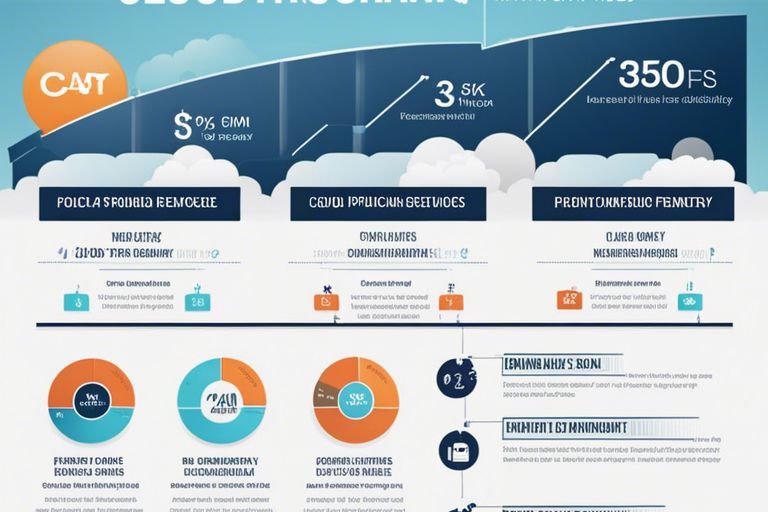Navigating the complex world of cloud pricing models can be daunting, but understanding them is crucial for making informed decisions. From pay-as-you-go to reserved instances and spot pricing, each model has its own set of benefits and drawbacks. This guide will help you compare and contrast different pricing structures, enabling you to choose the one that best fits your budget and usage patterns. Don’t let cloud pricing be a mystery – empower yourself with knowledge!
Key Takeaways:
- Understand Your Needs: Before choosing a cloud pricing model, accurately assess your requirements such as storage, computing power, and expected growth.
- Compare Pricing Models: Consider factors like pay-as-you-go, reserved instances, and spot instances to find the most cost-effective option based on your workload and budget.
- Utilize Hybrid Approaches: Combining different pricing models can optimize costs for varying workloads, providing flexibility and efficiency in your cloud usage.
Cloud Pricing Models Explained
Pay-as-You-Go Pricing
A popular cloud pricing model is Pay-as-You-Go Pricing, which offers flexibility and scalability to users. The pay-as-you-go model is like paying for utilities; you only pay for what you use. This pricing structure is ideal for businesses that have fluctuating demands and need the ability to scale resources up or down as required.
Reserved Instances Pricing
Pricing model involves committing to using a specific amount of resources over a contracted period. Users typically receive a discounted rate compared to pay-as-you-go pricing. This model is best suited for predictable workloads that will be consistently running for an extended period.
This pricing model is advantageous for businesses that can forecast their resource needs accurately. By committing to a certain level of usage, companies can secure lower rates and potentially save costs in the long run.
Subscription-Based Pricing
Pricing model entails paying a fixed monthly or annual fee for a set amount of resources or services. This model provides predictability in costs, making it easier for businesses to budget and plan ahead. With a subscription-based pricing model, users can access a specified level of resources throughout the subscription period, regardless of actual usage.

Key Factors to Consider
Any organization considering cloud services must evaluate various factors to determine the most suitable pricing model. These factors can impact costs, performance, and overall satisfaction with the cloud services chosen. Here are some key elements to keep in mind:
Resource Utilization
Utilization of resources is a critical aspect when selecting a cloud pricing model. Understanding the amount of compute, storage, and network resources your applications require is vital in determining whether a pay-as-you-go model or a commitment-based plan is more cost-effective. Analyzing your organization’s historic usage patterns can provide valuable insights into how resource-intensive your workloads are and what pricing model aligns best with your needs.
Budget Constraints
With budget constraints, it’s crucial to assess your organization’s financial capabilities and limitations when choosing a cloud pricing model. Consider factors such as upfront costs, operational expenses, and forecasting accuracy when deciding between a fixed pricing model or a variable pay-as-you-go structure. Ensure that the chosen model not only meets your current budget constraints but also allows for flexibility as your business scales and evolves.
Consider engaging with your finance and IT teams to gain a comprehensive understanding of your organization’s budget constraints and how different cloud pricing models can impact your financial health in the short and long term.
Scalability Requirements
The scalability requirements of your organization play a significant role in selecting the right cloud pricing model. Whether you anticipate rapid growth or fluctuating demand for your services, it’s important to choose a pricing model that can easily accommodate your evolving scalability needs. Assessing factors such as auto-scaling capabilities, resource provisioning speed, and cost implications of scaling up or down can help you determine whether a flexible or a more rigid pricing model is suitable for your organization.
Choosing the Right Pricing Model
Despite the complexities of cloud pricing models, it is crucial to choose the right one for your business to optimize costs effectively. A valuable resource for demystifying cloud pricing can be found in the Demystifying Cloud Pricing: A Comprehensive Guide for Businesses.
Assessing Your Workload
Any decision on cloud pricing models should start with a thorough assessment of your workload requirements. Understanding the nature of your applications, data storage needs, and traffic patterns is necessary for choosing the most cost-effective model. Consider whether your workload is consistent or varies over time, as this can impact which pricing model will suit your business best.
Evaluating Your Budget
With cloud pricing, it’s crucial to align your chosen model with your budgetary constraints. Evaluate your current financial resources and projections to determine how much you can allocate to cloud services. Factor in not only the upfront costs but also any potential hidden fees or additional charges based on usage levels. To effectively manage costs, choose a pricing model that fits within your budget while still meeting your business needs.
To best evaluate your budget, consider utilizing cost estimation tools provided by cloud service providers. These tools can help you forecast expenses based on different pricing models and usage scenarios, allowing you to make informed decisions that align with your financial goals.
Considering Your Growth Plans
Your growth plans play a crucial role in selecting the right pricing model for your business. While a pay-as-you-go model may be suitable for startups or small businesses, enterprises with predictable growth patterns may benefit more from reserved instances or committed usage discounts. Understanding your long-term growth strategy can help you anticipate future cloud usage demands and tailor your pricing model accordingly.

Pros and Cons of Each Model
Once again, before making a decision on which cloud pricing model to choose, it’s necessary to understand the pros and cons of each option. Below is a breakdown of the advantages and disadvantages of the three most common cloud pricing models: Pay-as-You-Go Pricing, Reserved Instances Pricing, and Subscription-Based Pricing.
| Pay-as-You-Go Pricing | Reserved Instances Pricing |
| Flexibility in usage | Potential for cost savings with upfront commitment |
| Cost-effective for short-term projects | Less flexibility compared to pay-as-you-go |
| Predictable billing based on usage | Savings may vary based on usage |
| No long-term commitment | Requires forecasting of resource needs |
| A Guide to Choosing the Right Cloud Pricing Model | Potential for underutilization of reserved instances |
Pay-as-You-Go Pricing: Weighing Flexibility and Cost
Flexibility is the key benefit of Pay-as-You-Go pricing, allowing users to scale resources as needed without long-term commitments. This model is cost-effective for short-term projects or when usage patterns are unpredictable. However, it can result in higher costs in the long run compared to reserved instances pricing.
Reserved Instances Pricing: Balancing Commitment and Savings
Model Reserved Instances Pricing offers potential cost savings with an upfront commitment to a certain amount of resources over a fixed term. For instance, commitment to a one-year reservation may lead to more significant discounts compared to pay-as-you-go pricing. However, users need to accurately forecast their resource needs to avoid underutilization or over-commitment, which can negate the cost savings.
Subscription-Based Pricing: Evaluating Predictability and Cost
To evaluate Subscription-Based Pricing, one must consider the predictability of costs and the long-term commitment required. This model provides a fixed fee for a set period, offering cost predictability and potentially discounts for long-term commitments. However, users may face challenges if resource needs fluctuate significantly during the subscription term.
Evaluating the pros and cons of each cloud pricing model is crucial to selecting the best option for your specific needs. While one model may offer flexibility, another may provide substantial cost savings in the long run. By carefully considering your usage patterns, resource requirements, and budget constraints, you can make an informed decision that aligns with your business goals.
Real-World Applications
Now let’s explore how different cloud pricing models can benefit real-world applications.
Startups and Small Businesses
RealWorld applications for startups and small businesses often involve unpredictable growth and fluctuating demands. Pay-as-you-go or metered pricing models could be ideal for these businesses, as they only pay for the resources they use. This flexibility allows startups to scale up or down based on their current needs without being tied down by fixed costs.
Enterprises and Large Organizations
For Enterprises and Large Organizations, who often have stable and predictable workloads, committing to a reserved instance or a subscription-based pricing model could provide cost savings in the long run. By estimating their usage accurately and committing to a certain level of resources, they can benefit from volume discounts and potentially lower prices per unit.
Startups that are just beginning may find it challenging to predict their growth trajectory accurately. Therefore, a pay-as-you-go model allows them to manage costs effectively without overcommitting to resources they may not need immediately.
Industries with Unique Needs
RealWorld In the context of industries with unique needs such as healthcare or finance, security and compliance are top priorities. Cloud pricing models that offer dedicated resources, enhanced security features, and compliance certifications are crucial for these industries. While the cost may be higher, the peace of mind and protection of sensitive data outweigh the expenses.
It’s vital for businesses in these sectors to prioritize security and compliance, even if it means investing more in cloud services. The consequences of a data breach or non-compliance can be far more costly than the price of a dedicated and secure cloud infrastructure.
Managing Cloud Costs Effectively
Monitoring and Optimization Techniques
Techniques: Keep a close eye on your cloud usage and expenses by implementing monitoring and optimization techniques. Utilize tools that provide real-time visibility into your cloud environment, allowing you to identify any inefficiencies or unused resources. By regularly optimizing your cloud infrastructure based on this data, you can ensure that you are only paying for what you need.
Cost Allocation and Tagging Strategies
Monitoring: Implement cost allocation and tagging strategies to track and allocate expenses accurately across different departments or projects. By assigning tags to resources and services, you can easily identify which areas of your business are driving the most significant cloud costs. This level of visibility enables you to make informed decisions on resource allocation and optimization.
Plus: Collaborate with your finance team to establish a clear and consistent tagging strategy that aligns with your organization’s cost allocation requirements. Regularly review and adjust your tagging strategy as your cloud environment evolves to ensure accurate cost allocation.
Budgeting and Forecasting Best Practices
The: Budgeting and forecasting are crucial components of effective cloud cost management. Establish clear budgeting practices by setting spending limits for each department or project within your organization. By forecasting future cloud usage based on historical data and growth projections, you can proactively adjust your budget to accommodate potential cost increases.
Budgeting: Regularly review your budget and compare it against actual expenses to identify any discrepancies or areas for improvement. By continuously refining your budgeting and forecasting practices, you can optimize your cloud costs and ensure budget compliance throughout your organization.
Conclusion
Conclusively, navigating cloud pricing models can be a daunting task, but by understanding the differences between pay-as-you-go, reserved instances, and spot pricing, individuals and businesses can make informed decisions that align with their needs and budget. It is crucial to weigh factors such as flexibility, predictability, and cost efficiency when choosing the right cloud pricing model. By taking the time to assess your requirements and align them with the features of each pricing model, you can optimize your cloud usage and maximize the value of your investment.
Note, there is no one-size-fits-all solution when it comes to cloud pricing models. Each organization has its unique needs and constraints, so it’s crucial to do thorough research and possibly consult with cloud experts to determine the most suitable pricing model for your specific situation. With the right approach, you can leverage the benefits of cloud computing while effectively managing costs and resources, ultimately enhancing your competitive edge in the digital landscape.
FAQ
Q: What are the different types of cloud pricing models?
A: There are three primary types of cloud pricing models: pay-as-you-go, reserved instances, and spot instances. Each model has its own unique benefits and cost structures.
Q: What is a pay-as-you-go pricing model?
A: In a pay-as-you-go pricing model, you only pay for the services you use without any long-term commitments. This model is flexible and ideal for businesses with fluctuating workloads.
Q: How do I determine which cloud pricing model is right for my business?
A: To determine the right cloud pricing model for your business, consider factors such as workload predictability, budget constraints, and long-term usage requirements. It’s also imperative to regularly evaluate and adjust your pricing model based on your evolving needs.







